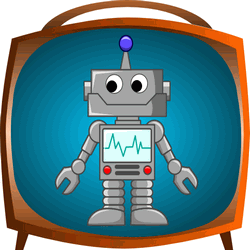Digital and Embedded Systems Design

An Embedded Microcontroller or DSP system is made of Chips, Circuits and Firmware. The digital voltage levels, speed, bus width, fan out, power consumption are some factors that a designer has to keep in mind. As portable and wireless gadgets are becoming more popular, RF, Ethernet and Energy Efficient Design aspects should be studied. Power electronics and Analog Circuits knowledge is used around the system, all this is integrated to make an instrument, equipment or gadget.

- 80C51 ports can sink more current but source very less, hence use a 10k pull up at all the ports or outputs.
- Firmware must be developed in increments, tested in increments, backed up in increments, must be modular (include) reuse.
- Tristate output, High Impedance and Floating all mean the same when it comes to IC Inputs-Outputs. It means the pin is insulated from rest of circuit in the IC. That means it will not influence the node or bus it is connected to. A DMM terminals are floating means that the hand held plastic DMM has no electrical conductive link to earth or ground.
- You can use hyper terminal to upload code to single board computers 80C51 like in BINARY or ASCII.
- ASICs are for large volume production, or for products which have a long product life cycle.
- Low volume production use FPGA or CPLD, or even flash based microcontrollers, so that all your inventory can be reused and recycled.
- Cell phones or a LAN card ASIC is ideal as volumes are good in cell phones and for LAN cards the technology is matured. For either FPGA or ASIC’s you get IP Modules or Code Libraries for many functions and applications.
- Whatever the method keep design flexible and modular for reuse and to save cost. remember the hardware is difficult to alter, software can be altered even at customer site, flash has made this possible
- In the future chips may be both analog and digital programmable with flash.
- Unused CMOS inputs should have a pull up or pull down resistor, it should not float, or it oscillates.
- Have a decoupling capacitor 104 that is 0.1uF or 100nF across the supply of every IC very near the IC supply pins.
- A watchdog timer should be used in every microcomputer circuit like 8051 so that the system resets on hanging.
- The reset on a microcomputer should be applied till the supply to it is stabilized, this will enable a clean start.
- Analog ground (opamps), digital ground (CMOS) and power ground (relays and LED) should be separate, (linked at root)
- Pull up or pull down resistors in TTL can be 10K and in CMOS 100K and in battery operated systems 1M.
- CMOS gates and Opamps have a output drive capability of ~ 10-20mA, so when you drive a load say an LED use a series resistor to limit the current to 5mA to 10mA.
- When the number of digital chips you use in a project goes above 20 or 30 then it is better to use PLD or CPLD types.
- Try to use same family ICs in a circuit, like only LS or only HCT, if you mix up then you have to do a design review.
- In a industrial environment many motors, DC drives and AC drives will be running, this will produce EMI, RFI, kickback spikes which cause microcontroller based equipment to hang. Use a watchdog timer for uC.
- More EMI immunity by using opto couplers for all input and outputs, 4-20mA current signals for input and output and an isolated wide range SMPS.
The glue/interface Logic families are many. TTL and CMOS is what we all know. TTL is made of the trusted NPN and PNP transistors. CMOS logic is made of Mosfets/FET
types. I like HCT but these days it appears ACT is better and affordable too.
CD40XX and Intersil chips were the first CMOS types of IC that became popular. The former were versatile Building Blocks and the Latter created what i would call Flexible Advanced Public ASICs.
CMOS are low power consumption and TTL are nice Speed. In intel chips you could see the transition at 8031 to 80C31, a CMOS with good speed. Now its CMOS everywhere. FET’s rule.





